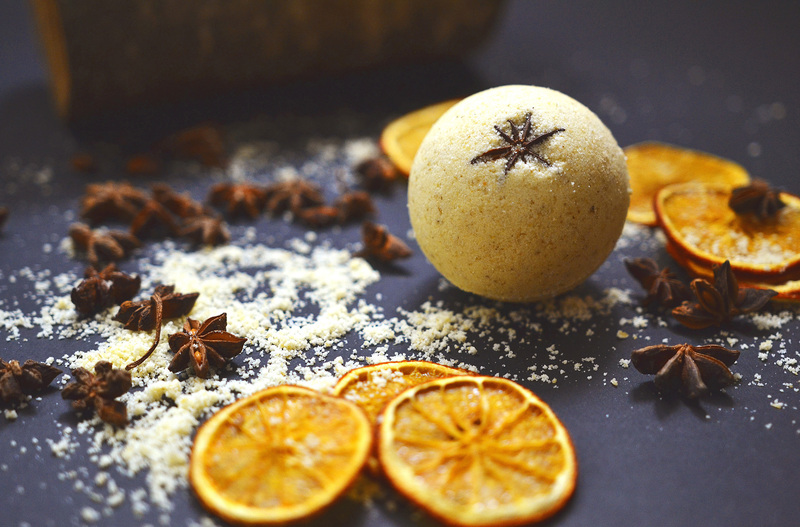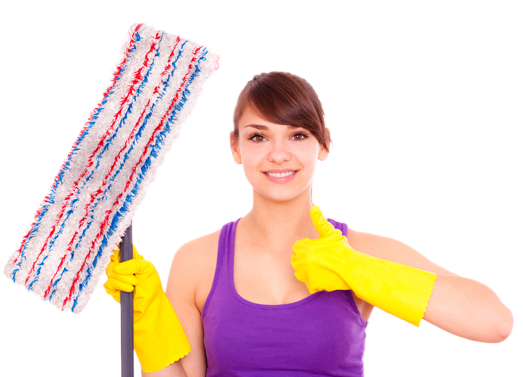Velvet Curtain Care Made Simple: How to Wash and Maintain Their Regal Look
Posted on 02/06/2025
Velvet Curtain Care Made Simple: How to Wash and Maintain Their Regal Look
Velvet curtains exude a sense of opulence and elegance unmatched by many other fabric choices. Their rich textures, deep colors, and luxurious drape can instantly elevate any living space, making them a favorite in both classic and modern interiors. However, their regal look comes with the responsibility of special maintenance. Many people shy away from velvet window treatments, fearing they are high-maintenance and difficult to clean. Fortunately, caring for velvet curtains can be straightforward with the right approach, ensuring they retain their beauty for years to come.
Why Velvet Curtains Require Special Attention
Unlike cotton or synthetic materials, velvet is a pile fabric with tightly woven, dense fibers that create its hallmark plush surface. While this texture delivers charm and drama, it also traps dust, allergens, and can develop creases or flatten if not handled delicately. Moreover, velvet can be made from various fibers--such as silk, cotton, polyester, or a blend--each requiring specific care methods.
- Silk velvet: Exceptionally luxurious but highly delicate; often requires professional care.
- Cotton velvet: Durable but can shrink or lose pile if washed improperly.
- Polyester or synthetic velvet: More resilient and generally easier to clean than natural velvet.
Before diving into the details of washing velvet curtains and their care, always check the manufacturer's care label. Now, let's unravel the steps to keeping your velvet looking as royal as the day you hung it.

Regular Velvet Curtain Maintenance
1. Dusting and Vacuuming Your Velvet Drapes
Dust and airborne particles accumulate on velvet fabric's surface over time, contributing to dullness and a drab appearance. The simplest, yet most effective way to preserve their allure is consistent dusting and vacuuming.
- Weekly vacuuming: Use a handheld vacuum or upholstery attachment set to the gentlest suction. Always move in the direction of the nap (the raised fabric fibers) to avoid crushing the pile.
- Soft brush: Alternatively, a clean, soft-bristled clothes brush works wonders for lifting dust and maintaining the fabric's luster.
2. Spot Cleaning for Minor Stains
Even with the utmost care, accidents can happen. For accidental spills or spots, immediate attention is critical to maintaining the regal look of velvet curtains.
- Blot, don't rub: Use a clean, dry, lint-free cloth to gently blot the stain. Never rub; rubbing forces the stain deeper and flattens the pile.
- Damp cloth cleaning: If required, lightly dampen the area with lukewarm water, blotting with a cloth. For tougher stains, a tiny amount of mild dish soap diluted in water may be used, but do a patch test first.
- Dry the fabric: Pat the area dry with another clean cloth, then let it air dry completely, away from direct sunlight or heat sources.
Tip: For persistent or large stains, always consider professional cleaning to prevent damaging your curtain's structure and appearance.
Deep Cleaning: How to Wash Velvet Curtains Safely
Deep cleaning velvet draperies calls for attention to detail and respect for the fabric's unique properties. Here's how you can wash velvet curtains with confidence.
1. Check the Fabric Type and Care Label
Before you start any washing process, read the curtains' care label. Not all velvet is washable--some types, especially silk velvet, should always be dry cleaned.
- Machine-washable velvet: Some synthetic velvets may be machine washable, but it is still vital to use a delicate cycle, cold water, and a garment bag to protect the fabric.
- Hand washing: Cotton and other washable velvets are best hand washed to avoid pile damage.
- Dry clean only: If the label states "dry clean only," never attempt washing at home. Home methods may lead to permanent creasing, color bleeding, or shrinking.
2. Hand Washing Velvet Curtains: Step-by-Step
- Prepare a gentle bath: Fill a clean bathtub or large sink with cold or lukewarm water. Add a small amount of mild, non-alkaline detergent designed for delicate fabrics.
- Soak and agitate gently: Submerge the velvet gently and swish the fabric with your hands--never wring or twist--to dislodge dirt without damaging the pile.
- Rinse thoroughly: Drain the soapy water, then refill with fresh, cold water. Carefully swish until all soap residues are gone; leftover soap can stiffen the pile or cause discoloration.
- Blot excess water: Remove the curtains, lay them flat on a thick, absorbent towel, and roll up to gently press out moisture. Avoid any wringing or squeezing.
3. Machine Washing Velvet Curtains: Is It Safe?
Polyester and some synthetic velvets can sometimes be machine washed, but only with utmost caution:
- Turn curtains inside out.
- Place them in a mesh garment bag for protection.
- Wash on delicate cycle with cold water and a gentle detergent.
- Remove promptly after washing to avoid creases and pile damage.
*When in doubt, always opt for professional cleaning.
4. Drying Velvet Curtains Correctly
- Air drying: After blotting out excess water, hang the curtains to dry naturally. Lay them over a clean, flat surface or hang them on a rod. Avoid direct sunlight, which can cause fading, and never use a tumble dryer, as heat damages the pile and can cause severe creasing.
- Shape as you go: As the curtains dry, gently smooth and reshape them. This prevents permanent folds or marks in the velvet.
Ironing and Steaming Velvet Curtains
One of the unique challenges with velvet is the high risk of pile crushing or unwanted marks when using traditional ironing techniques.
1. Iron Velvet Curtains With Caution
- Never press a hot iron directly on velvet. If ironing is absolutely necessary, always use a velvet board or place a thick towel underneath the fabric, then iron on the reverse side using the lowest setting possible.
- Use a pressing cloth: Lay a clean, white cloth between the iron and the curtain to further protect the velvet pile.
2. Steaming: The Preferred Method
- Steaming is significantly safer and more effective for removing wrinkles and creases from velvet. Use a handheld garment steamer and gently hover it a few centimeters away from the curtain's surface, allowing the steam to relax and lift the fibers.
Do not saturate the velvet with steam--instead, let the warm vapor do the work and finish by reshaping with your hands.
How to Store Velvet Curtains and Prevent Damage
Proper storage is essential to preserve the elegance of velvet curtains and avoid permanent marks or mildew.
- Store in a cool, dry place: Humidity and dampness can invite mold, discoloration, and fabric weakness.
- Roll instead of folding: If possible, gently roll your velvet curtains instead of folding. This helps prevent harsh creases and preserves the natural drape.
- Use breathable storage bags: Avoid plastic or airtight containers; instead, opt for cotton storage bags to allow the fabric to breathe, reducing risk of moisture buildup.
- Keep away from direct sunlight: Even in storage, avoid sunlight exposure, which can cause fading and premature aging.
Tips for Maintaining the Regal Look of Your Velvet Drapes
Want to ensure those luxurious velvet window coverings continue to impress? Put these pro tips into your routine:
- Regularly shake out your curtains: Every couple of weeks, gently shake the panels to dislodge dust and keep the pile looking fresh.
- Keep windows closed during storms: Prevent water stains and dust from accumulating on your precious draperies.
- Maintain proper humidity: Too much moisture in your home can lead to mildew, while very dry air increases static, attracting dust. Aim for a comfortable balance.
- Avoid overhandling: Frequent touching and pulling can crush the velvet's nap. Use curtain rods or pull cords to open and close, minimizing direct contact.
- Rotate curtain positions: Swap panels from left to right occasionally to even out sun exposure and wear.
Benefits of Professional Cleaning Services
While home care is feasible, professional velvet curtain cleaning is recommended under these circumstances:
- Large, heavy curtains that can't be washed at home or are too unwieldy to handle.
- Intricate embellishments, delicate linings, or beaded trims that may not survive traditional washing.
- Stubborn stains, extensive soiling, or when the label indicates "dry clean only."
Professional cleaners use specialized methods--like dry cleaning or solvent treatments--to protect the rich texture and depth of your velvet curtains.

Frequently Asked Questions About Velvet Curtain Care
Q: Can all velvet curtains be washed at home?
A: No. Always check your curtain's label first. While some synthetic velvets are machine washable, silk and other delicate velvets require professional cleaning.
Q: How do I keep my velvet curtains from crushing or flattening?
A: Handle them gently, vacuum regularly in the direction of the nap, steam instead of iron for wrinkles, and avoid stacking or cramming during storage.
Q: How often should I clean velvet drapes?
A: Dust or vacuum weekly, spot clean as needed, and plan for deep cleaning or professional service every 1-2 years, or sooner if exposed to smoke, pets, or heavy use.
Conclusion: Lasting Elegance Made Easy
Velvet curtains care doesn't have to be intimidating. By incorporating gentle cleaning methods, mindful maintenance, and preventative measures, you can protect and prolong the regal look of your velvet draperies for years. Whether you're revamping a living room or giving a classic touch to your bedroom, maintaining velvet window treatments enhances not just the look, but the feel of your space.
So embrace the unmatched luxury of velvet; with proper attention, your curtains will continue to make a royal statement in your home season after season!




